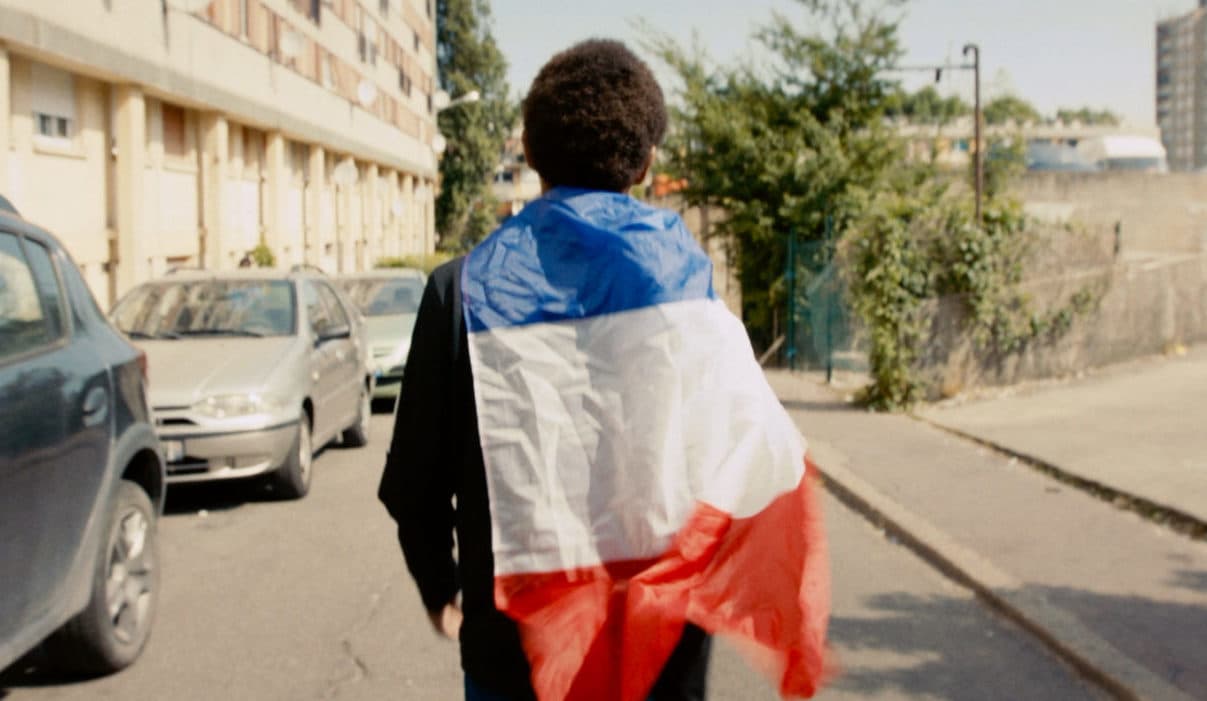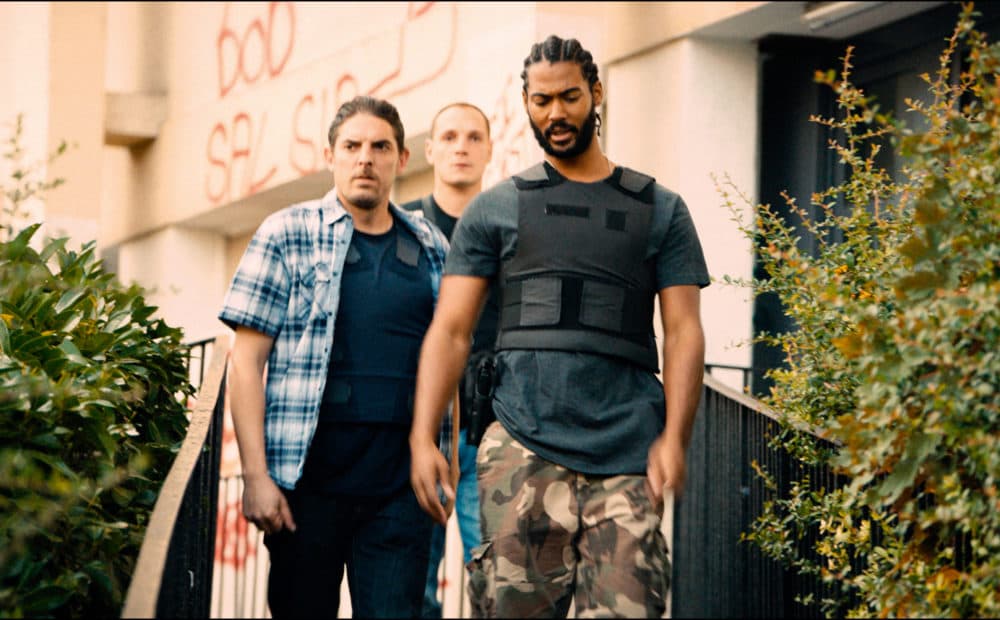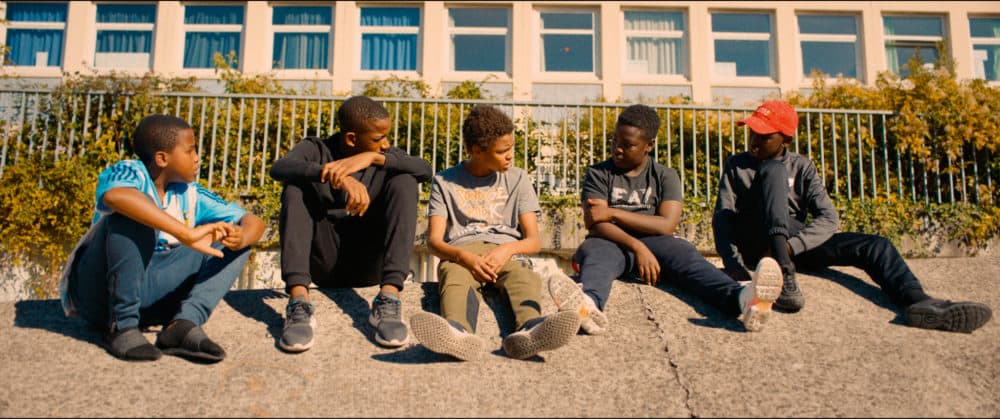Advertisement
Review
Contemporary Cop Thriller 'Les Misérables' Riffs On Victor Hugo’s Timeless Themes

The Paris streets are full of joy during the opening moments of Ladj Ly’s electrifying “Les Misérables,” which despite the deceptive title is not yet another adaptation of Victor Hugo’s 1862 novel, but rather an urgently contemporary cop thriller riffing on the tale’s timeless themes. The film begins with ecstatic, slo-mo celebrations of France’s 2018 World Cup victory, as countrymen and women of all colors and creeds embrace in common cause and happiness. Alas, these will be our last sightings of liberty, fraternity and equality for the next couple hours.
Welcome to the housing projects of Montfermeil, a largely North African neighborhood patrolled by hot-tempered plainclothes policemen who preside over a multicultural tinderbox of rival street gangs, dope dealers and prostitutes. It’s the first day on the job for Corporal Ruiz (swarthy, sad-eyed Damien Bonnard), who just transferred from the countryside, and he’s getting hazed pretty hard by his new partners Gwada (Djebril Zonga) and the wired, casually racist Chris (Alexis Manenti), who wears his nickname “Pink Pig” proudly and has apparently never found himself in a sticky situation he couldn’t crank up a notch or two.

Gwada’s the good cop here — a guy who grew up in the area, speaks a couple of languages and can generally be counted on to defuse whatever his partner’s been escalating. Chris makes a big show out of not wearing his bulletproof vest and struts around in a “Venom” T-shirt instead. Manenti, who co-wrote the screenplay with director Ly and Giordano Gederlini, gives his Pink Pig the diminutive stature and oversized smirk of your classic policeman bully, and a good chunk of the early going in “Les Misérables” is watching this alpha dog mark his territory while even-keeled newbie Ruiz wonders what exactly he’s gotten himself into.
It’s a bustling ecosystem of hustlers and hoods, all working at shared interests and cross purposes with the density — if not the detail — you’d find in a Richard Price novel or a David Simon television series. Ly isn’t afraid to wear his influences on his sleeve here, with elements of “Training Day” and “La Haine” bumping up against memories of “Clockers” and “The Wire.” “Do the Right Thing” also looms large over the proceedings, with racial tensions in the neighborhood on the verge of boiling over on a day when it’s too damn hot outside for any of this nonsense.
Nobody steals a loaf of bread in this “Les Misérables,” but mischievous teenage Issa (Issa Perica) nearly causes a gang war when he stupidly swipes a lion cub from the local Roma circus. Hilariously, our detectives have no problem tracking the perpetrator down, as these days young criminals can’t resist posing for Instagram selfies with their ill-gotten gains. But the whole situation still blows up all out of control anyway when an act of (accidental?) police brutality is captured via a drone camera that one of the local kids was using to spy on the girls next door changing their clothes.
Things fall apart with exhilarating inevitability in this “Les Misérables.” The increasingly Javert-like Pink Pig is hell-bent on covering up the whole mess, expending all his remaining favors and street cred on finding that drone footage before it ends up online. The riots of 2005 are never far from the minds of these cops and crooks, all jockeying for their own leverage and power while simultaneously trying to keep the neighborhood from going up in flames.

A lot of the genre beats may be familiar to crime story aficionados, but the textures of “Les Misérables” are what feel fresh. This is a significantly darker-skinned, financially-deprived part of Paris than we’re used to seeing onscreen, upending French film stereotypes of bourgeoisie couples having extramarital affairs over wine and cheese. I wasn’t surprised at all to learn that Ly grew up in the neighborhood where the picture takes place, lingering as he does on particulars like a kabob shop called Ali Bomaye, decorated with photos of the former heavyweight champ. This isn’t movie studio grit, the film feels like it’s happening somewhere real.
“Les Misérables” has gotten some unfair flack because France submitted it as their selection for this year’s best international film at the Academy Awards, a slot many would rather have gone to Céline Sciamma’s sublime “Portrait of a Lady on Fire.” This situation underscores the fundamental absurdity of pitting works of art against each other in competition, as well as the dumb myopia of a Hollywood awards body dictating that other countries only produce a single Oscar-worthy picture per year. There are tons of terrific movies out there from all over the world. This is one of them.
“Les Misérables” opens at Kendall Square Cinema on Thursday, Jan. 16.
